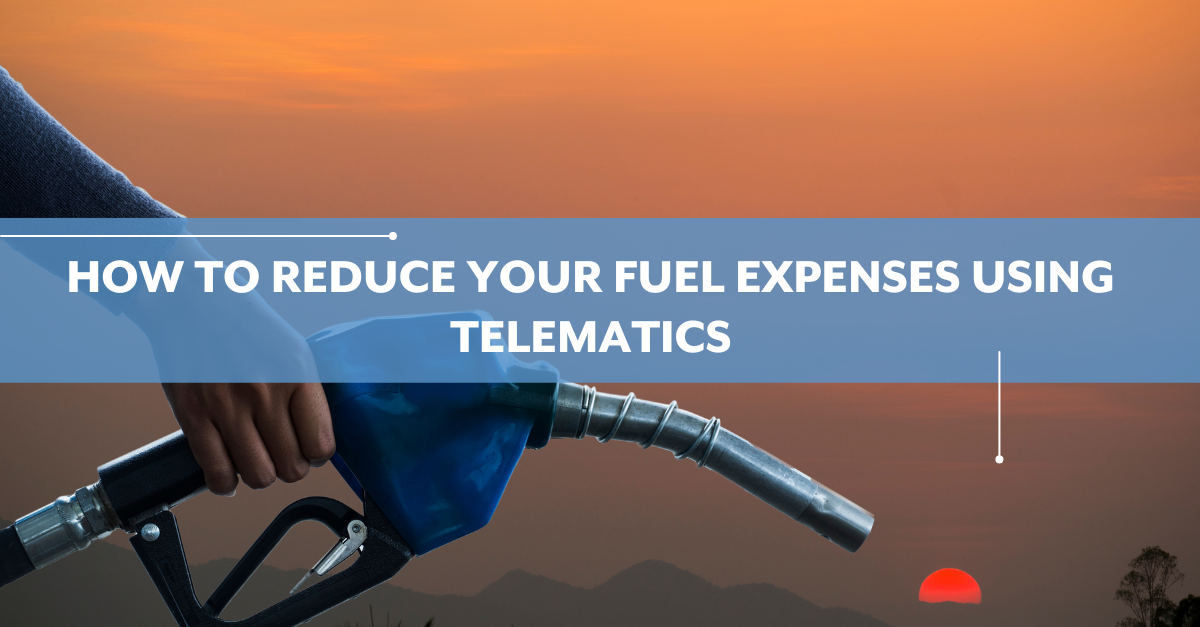Commercial Fleet Management: Strategies, Tools & Tips
Commercial fleet management plays a vital role in keeping businesses running smoothly, especially in industries like transportation, logistics, and...
Keep an eye on the road
Simplify your driver's routine
For efficient decision making
Ensure the compliance of your fleet
Simplify the daily life of your drivers
Maximize the value of your data
Unparalleled monitoring of your assets
The friendly competition that pays off
Planning powered by data
Exceed your customers' expectations
Provide better service to your users
Maximize the satisfaction of your citizens
Simplify your daily life on the construction site
Facilitate the electrification of your fleet
Our experts meet your needs
Easily meet the standards
Improve the safety of your drivers
Protect your data and your fleet
4 min read
![]() Anna-Kim Dion
Nov 29, 2022 2:43:23 PM
Anna-Kim Dion
Nov 29, 2022 2:43:23 PM

Article originally written by Geotab, edited by AttriX
Mont-Saint-Hilaire, QC, March 25th 2022- Maximizing your vehicle's MPG performance with fleet management technology can lower your fuel costs. Follow these steps.
Gas and diesel prices have been unstable especially after the pandemic took over the world. Political strategies, natural disasters, in addition to the overall high demand and reliance on fuel have all contributed towards the instability. The EIA predicts that regular gasoline retail prices will average $3.06/gal in 2022, up from $3.00/gal in 2021, and then go back down to $2.80/gal in 2023. The forecast for Canadian gas prices is $2 a liter in 2022.
What does this mean to a fleet owner? How do fuel prices affect fleet fuel economy? How can fleet managers improve gas mileage performance and reduce fuel expenses? This blog post will answer all these questions and provide telematics solutions that can contribute to efficiently running your fleet.
How to reduce fleet fuel costs?
Fuel can take up approximately 60% of a fleet’s total operating costs. Even though the fuel prices are rocky, using fleet management technology is a good way to maximize vehicle MPG performance and reduce fuel costs. Here are a few management objectives fleet managers can look into:
1. Stop unnecessary idling your vehicle
According to the US Department of Energy, idling can use a quarter to a half-gallon of fuel per hour. The Geotab Last 3 Months Idling Trend Report displays the total fuel used for the entire fleet over the last 3 months. The report is useful as it determines if newly implemented fuel usage policies have successfully decreased the amount of fuel that was used, and how it affected the miles driven and idling statistics.
2. Curb aggressive driving
The University of Michigan Transportation Research Institute (UMTRI) states that aggressive driving, as excessive speeding, rapid acceleration, harsh braking and cornering, tailgating and running stop signs can affect the fuel economy by an average of 31%. It can be curbed by setting up a driver scorecard where drivers will be ranked based on how safely they drive.
A good way to drastically reduce your fuel costs is to train and encourage your drivers to adopt good driving habits. Our Driver Challenge is an exclusive solution developed by the AttriX team that motivates your drivers in a fun way. By encouraging friendly competition, our famous contest increases the safety and productivity of your fleet, as well as the performance and commitment of your drivers.
Thanks to our solution, they will also learn more about the regulations in force and be made aware of the impacts of bad driving habits such as increased operational costs, while seeing their good behavior rewarded.
The Driver Challenge allows you to analyze your drivers' behaviors on the road, according to your own key performance indicators, and see how your fleet is performing and where you can improve. In fact, you can configure your performance indicators and their impact on your drivers' results or focus on a specific element such as safety or productivity.
 3. Track and manage fuel trends with Lighthouse
3. Track and manage fuel trends with Lighthouse
The Lighthouse platform was developed entirely by the AttriX team. The benefits of our platform extend to companies that wish to reduce their transportation and fuel costs, as well as to those who wish to begin their energy transition.LightHouse calculates for you the amount of money spent on fuel in your company. This way, you can monitor whether your fleet's consumption is increasing or decreasing.
In addition, our platform allows drivers to plan their stops at gas stations that are on their route and offer the best fuel prices. With better performance, you will achieve a reduction in operational costs and GHG emissions.
Our innovative and unique Lighthouse solution enables :
-Monitor trends and compare equivalent periods for your fleet's consumption.
-Plan drivers' stops at gas stations on their route that offer the best price for fuel.
-Simplify the analysis and decision making regarding the electrification of your trucks and much more.
-Identify any vehicle in your fleet that meets the criteria for an electric equivalent.
-Analyze frequent stops, identify and qualify charging opportunities on the road.
-Benefit from a complete management tool for the electric vehicles in the fleet.
-Accurately monitor the performance of electric vehicles and changes in battery levels.
-Recognize and estimate for each vehicle the potential fuel and GHG savings that can be achieved through best practices or devices subsidized by the EcoTrucking program.
 4. Optimize your routes
4. Optimize your routes
According to a report published by UMTRI, traffic congestion negatively impacts a vehicle’s fuel economy by 20-40% depending on the level of gridlock. Integrating routes into your fleet management systems can assist in choosing roads that have less traffic, are smoother for vehicles, and shorten the drive time. Managers can set up drivers customized, pre-scheduled routes and send them directly to the drivers.
5. Keep an eye on the tire pressure
According to the US Department of Energy, under-inflated tires can lower gas mileage by about 0.2% for every 1 PSI drop in the average pressure of all tires. Fleet managers can reduce fuel costs by monitoring tire pressure.
6. Conduct regular maintenance checks
According to a report in Fuel Economy, using the manufacturer's recommended grade of motor oil can improve the gas mileage by 1%–2%. Replacing air filters, changing oil, or just fixing any kind of maintenance issues with a vehicle can improve mileage by 40%. Implementing a telematics solution will save time and reduce costs.
7. Match the right vehicle to the task
Choosing the right vehicle for the right task is critical to managing fuel. A good practice is to downsize to vehicles with smaller engines that consume lesser amounts of fuel. Another option is to choose electric vehicles for lighter loads.
8. Use fuel cards
A controlled fuel card with specialized metrics and rules can help fleet managers keep a tab on fuel spending. A fuel management system will also identify the actual MPG, fuel consumption (when idling as well as when in use) and fuel levels.
9. Switch to EVs
EVs convert over 77% of the electrical energy from the grid to power at the wheels. On the other hand, gasoline vehicles only convert about 12%–30% of the energy stored in gasoline to power at the wheels. EVs are environmentally-friendly, reduce energy dependency, and also perform better than traditional vehicles. Telematics can be used to track your EVs right alongside your gas-powered cars and trucks. With Geotab, you can view trend reports, fuel and EV energy usage reports, EV charging reports and EV charge assurance.
For more information about our innovative solutions, contact us today.

Commercial fleet management plays a vital role in keeping businesses running smoothly, especially in industries like transportation, logistics, and...

In fleet management, fleet compliance services play a much bigger role than just checking a box. They’re about keeping your drivers safe, your...

Trucking has always come with its fair share of challenges, from road safety and liability issues to managing fleet efficiency. As the industry...